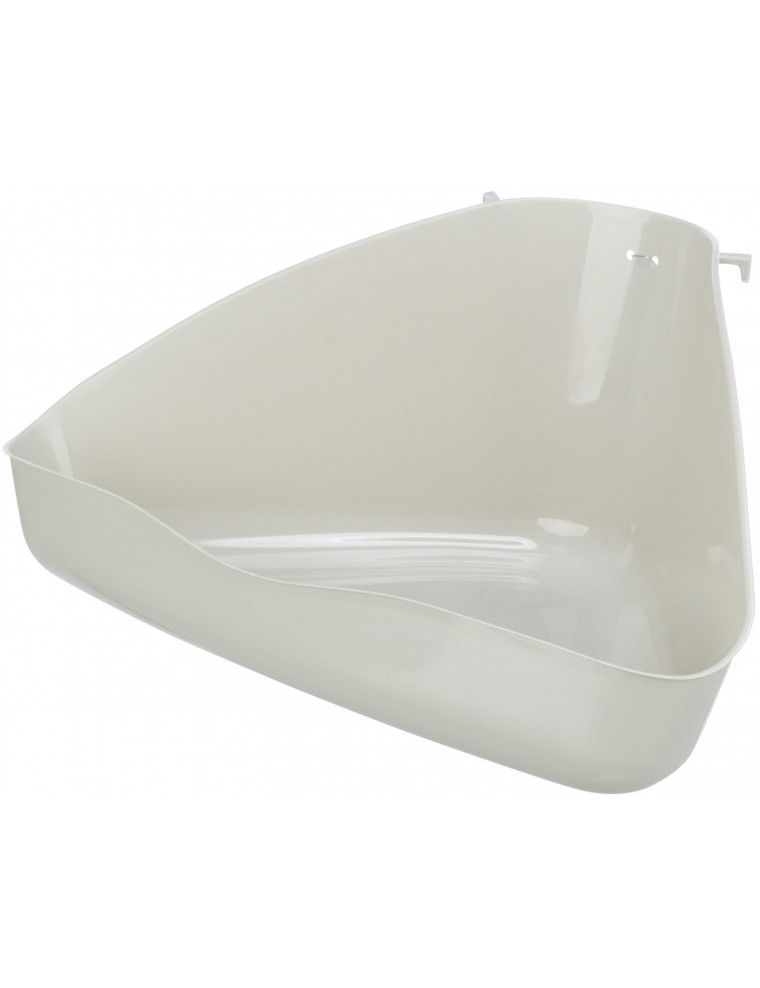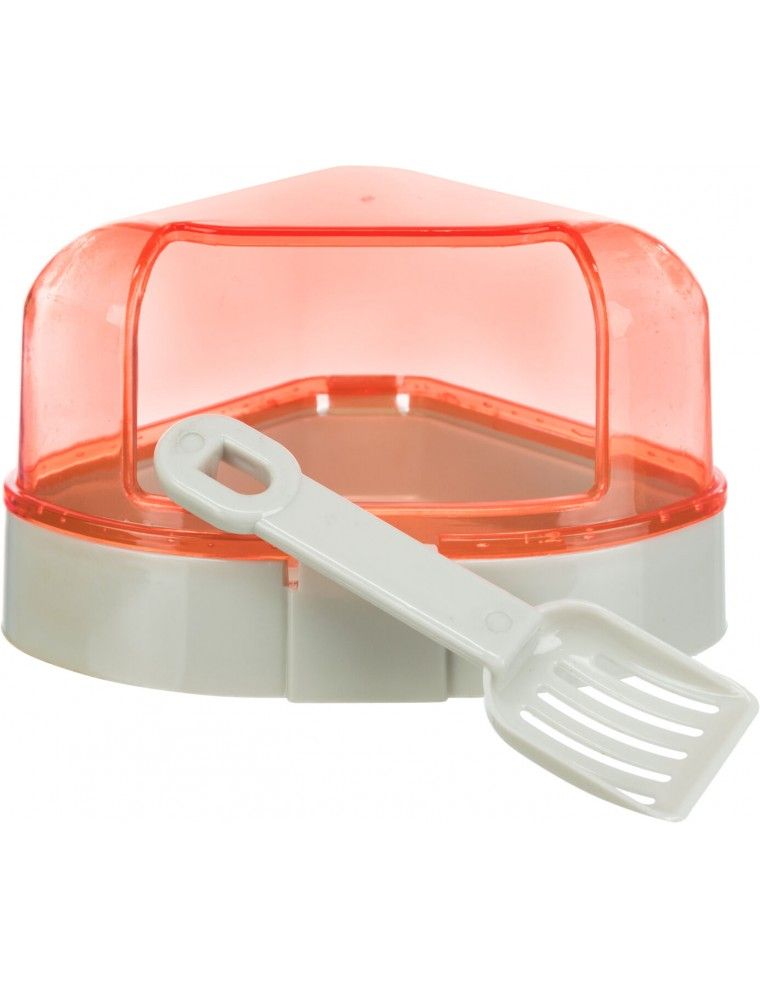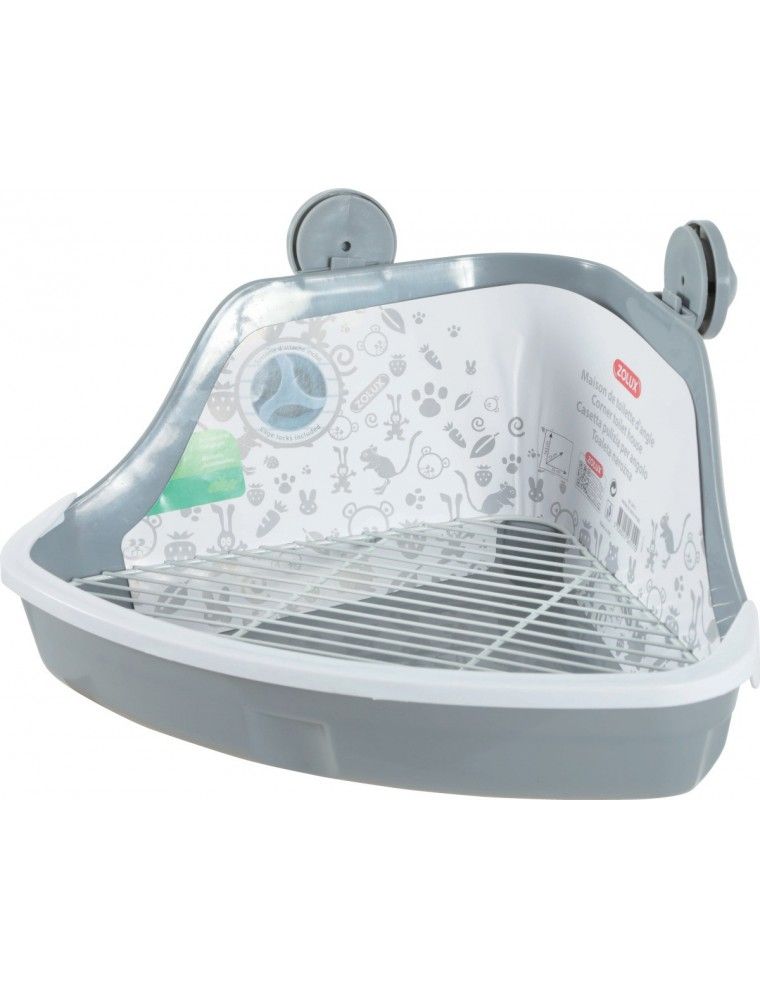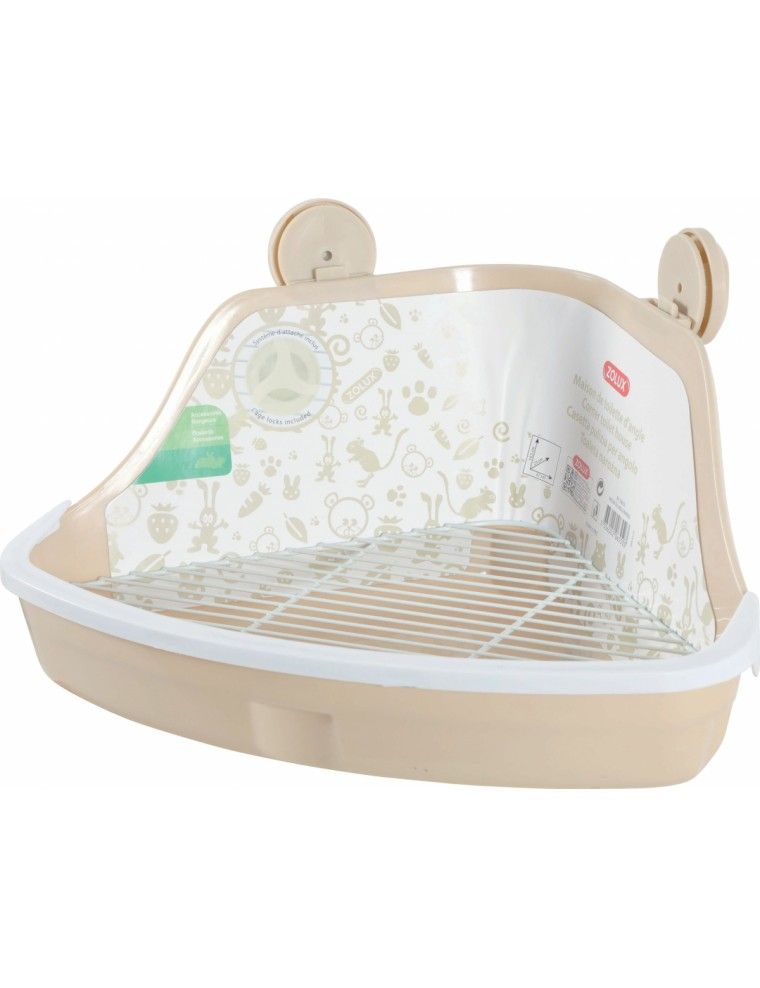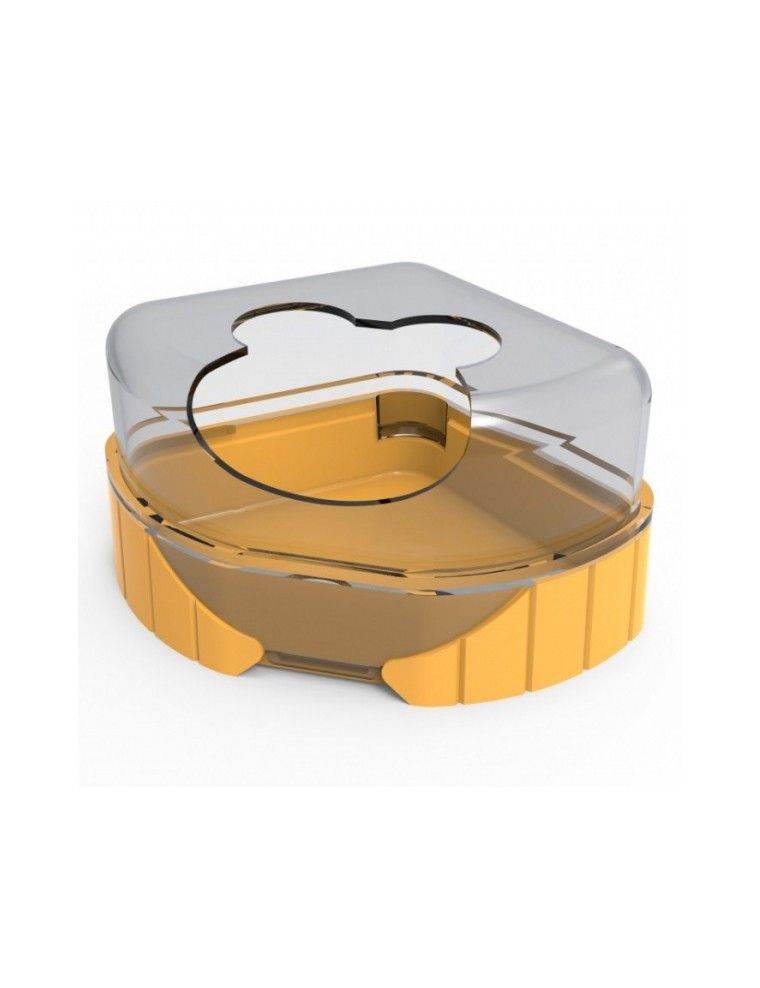- 2 in stock
Litter box Mouse/Rat/Gerbil
A Clean Revolution: Litter Boxes for Rodents
“The little rodent” revolutionizes the hygiene of your four-legged companions with a cutting-edge selection of litter boxes for mice, rats, and gerbils. Did you know that these smart little ones can learn to use a litter box, just like their feline friends? That's right, with a little patience and the right tools, maintaining a clean cage becomes child's play. Find out how to transform your little companion's hygiene in the blink of an eye.
Litter Box Training: Simple and Effective
Rats and other small rodents have this incredible ability to learn where to do their business, provided you provide them with the right tools and a little guidance. Placing a litter box in their habitat is the first step towards a cleaner cage and more pleasant cohabitation. Our Trixie and Zolux litter boxes are designed to fit seamlessly into your rodents' habitat, providing a dedicated space that will encourage your pets to adopt good habits. With several distributed toilets, especially if you have a multi-level home, you increase the chances of success.
Tips for Successful Training
Starting training as soon as possible is key. Observe where your rodents prefer to do their business and place the litter box there. At first, you can even place their excrement there to mark the spot. The “pee stone” trick is also surprising but effective: rats seem irresistibly attracted to the idea of doing their business around or on a stone. Place one in the bin to encourage this habit.
Choosing the Right Filling for the Litter Box
The choice of filling is crucial to distinguish the litter box from the rest of the cage. It must be different and specially designed to absorb liquids and odors. Our filler options range from specialty pellets to natural substrates, all selected for their effectiveness and ability to retain odors. This small change in habit, supported by the right equipment, will make all the difference in the daily lives of your little companions and yours. At "Le petit rodent", we understand the importance of hygiene in your rodents' habitat. This is why we offer you suitable solutions, both practical and hygienic, to make the lives of your little friends more pleasant. Check out our range of litter boxes and start establishing a clean, hassle-free routine today.
Litter box
A Clean Revolution: Litter Boxes for Rodents
“The little rodent” revolutionizes the hygiene of your four-legged companions with a cutting-edge selection of litter boxes for mice, rats, and gerbils. Did you know that these smart little ones can learn to use a litter box, just like their feline friends? That's right, with a little patience and the right tools, maintaining a clean cage becomes child's play. Find out how to transform your little companion's hygiene in the blink of an eye.
Litter Box Training: Simple and Effective
Rats and other small rodents have this incredible ability to learn where to do their business, provided you provide them with the right tools and a little guidance. Placing a litter box in their habitat is the first step towards a cleaner cage and more pleasant cohabitation. Our Trixie and Zolux litter boxes are designed to fit seamlessly into your rodents' habitat, providing a dedicated space that will encourage your pets to adopt good habits. With several distributed toilets, especially if you have a multi-level home, you increase the chances of success.
Tips for Successful Training
Starting training as soon as possible is key. Observe where your rodents prefer to do their business and place the litter box there. At first, you can even place their excrement there to mark the spot. The “pee stone” trick is also surprising but effective: rats seem irresistibly attracted to the idea of doing their business around or on a stone. Place one in the bin to encourage this habit.
Choosing the Right Filling for the Litter Box
The choice of filling is crucial to distinguish the litter box from the rest of the cage. It must be different and specially designed to absorb liquids and odors. Our filler options range from specialty pellets to natural substrates, all selected for their effectiveness and ability to retain odors. This small change in habit, supported by the right equipment, will make all the difference in the daily lives of your little companions and yours. At "Le petit rodent", we understand the importance of hygiene in your rodents' habitat. This is why we offer you suitable solutions, both practical and hygienic, to make the lives of your little friends more pleasant. Check out our range of litter boxes and start establishing a clean, hassle-free routine today.
- 2 in stock
- 3 in stock
- 2 in stock
- in replenishment
Questions / Réponses
Lorsque vous choisissez un bac à litière pour votre souris domestique, recherchez un modèle de petite taille qui s'adapte facilement dans un coin de sa cage. Il doit être assez bas pour que votre souris puisse y entrer facilement, tout en étant assez profond pour contenir la litière sans que celle-ci ne soit dispersée à l'extérieur du bac lorsqu'elle gratte. Les bacs en plastique lisse sont préférables car ils sont faciles à nettoyer et à désinfecter. Positionner le bac dans un coin déjà utilisé par votre souris pour ses besoins peut encourager son utilisation.
Pour encourager un rat domestique à utiliser un bac à litière, commencez par placer le bac dans l'endroit où il a tendance à faire ses besoins naturellement. Vous pouvez ajouter quelques-unes de ses excréments dans le bac pour l'aider à comprendre son usage. Choisissez une litière différente de celle de sa cage pour distinguer clairement les zones d'activité et de repos. L'entraînement peut prendre du temps, alors soyez patient et récompensez votre rat avec des friandises lorsqu'il utilise correctement le bac à litière.
Oui, les gerbilles peuvent être entraînées à utiliser un bac à litière, bien que cela puisse être un peu plus difficile que pour les rats ou les souris en raison de leur comportement de creusage naturel. Placez un bac à litière dans un coin de leur habitat où elles ont déjà choisi de faire leurs besoins. Utilisez une litière différente de celle de leur espace de vie principal pour les aider à distinguer les zones. Comme pour les autres petits rongeurs, la patience et la persistance sont clés. Récompenser les comportements souhaités peut également aider à renforcer l'entraînement.
Pour les bacs à litière des souris, rats, et gerbilles, il est recommandé d'utiliser une litière absorbante et sans poussière pour minimiser les risques respiratoires. Les litières à base de papier recyclé, de chanvre ou de maïs sont excellentes car elles sont sûres et efficaces pour contrôler les odeurs sans être nocives si ingérées en petites quantités. Évitez les litières agglomérantes et celles à base de bois de cèdre ou de pin, qui peuvent être irritantes pour les voies respiratoires de ces petits animaux.
Nettoyez le bac à litière de votre petit rongeur quotidiennement en retirant les excréments et la litière souillée. Une fois par semaine, videz entièrement le bac et nettoyez-le avec de l'eau chaude savonneuse ou une solution désinfectante non toxique. Rincez bien pour éliminer tout résidu de savon ou de désinfectant avant de remplir à nouveau le bac avec de la litière fraîche. Un nettoyage régulier prévient les odeurs désagréables et maintient un environnement sain pour votre animal.
Placez le bac à litière dans un coin de la cage que votre animal semble préférer pour ses besoins. Les petits rongeurs ont souvent tendance à choisir un coin spécifique pour se soulager, alors observer leur comportement peut vous aider à déterminer l'emplacement idéal. Évitez de placer le bac à litière à proximité immédiate des zones d'alimentation et de repos pour maintenir une hygiène appropriée dans la cage.
